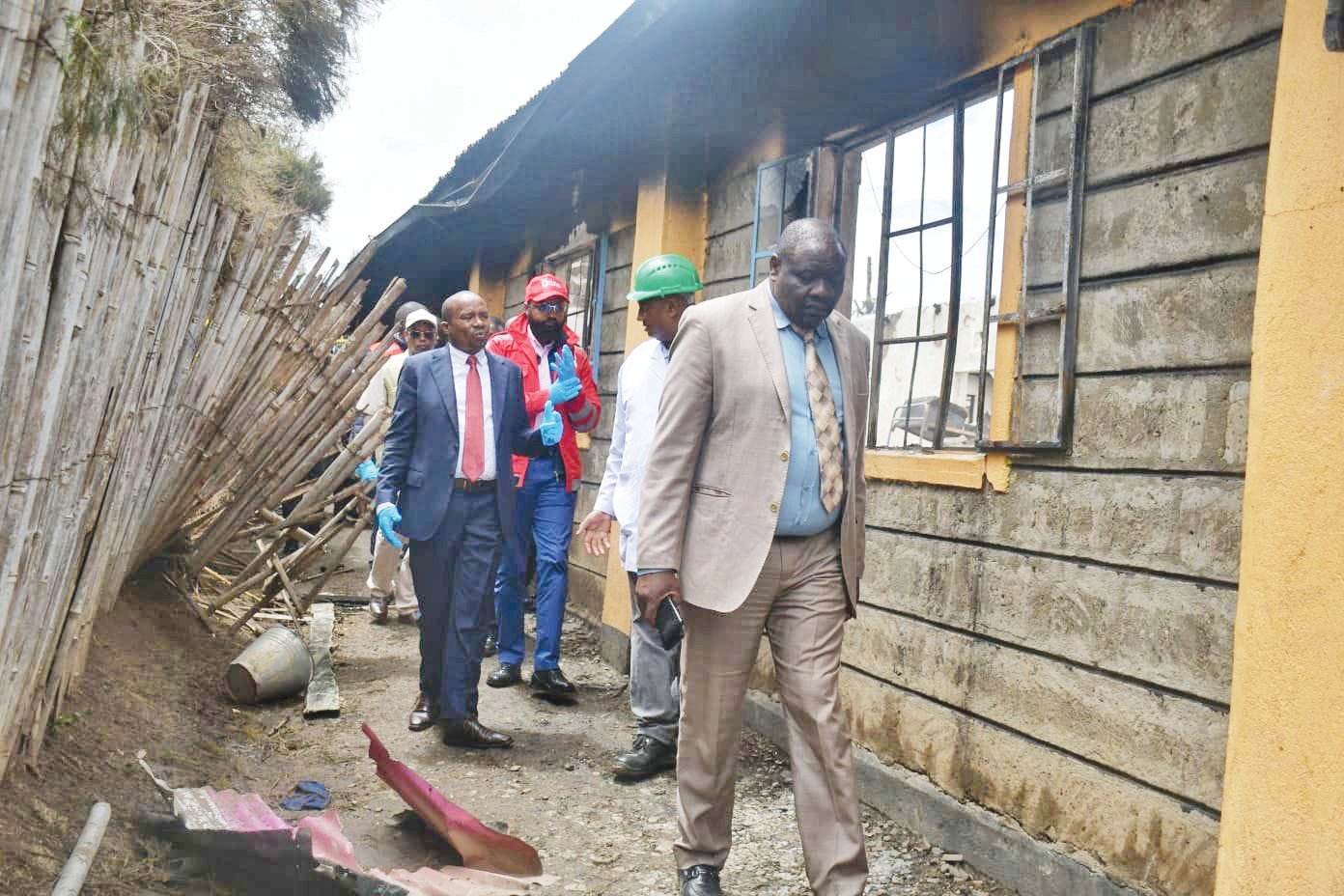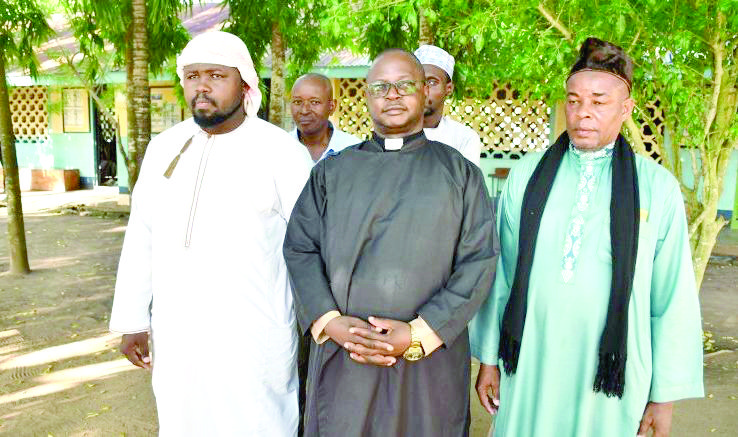The government’s failure to implement the Auditor General’s previous recommendations on preventing school fires has returned to haunt the education sector following last Thursday’s inferno at Hillside Endarasha Academy in Nyeri County that claimed the lives of 21 pupils.
In a performance audit report released in September 2020, the Auditor General spelt out far-reaching measures she wanted to be adopted in schools to avert such fire incidents.
The audit assessed the Ministry of Education’s fire preparedness for the 2014/15 to the 2018/19 period and sampled 42 secondary schools in Machakos, Siaya, Uasin Gishu and Kiambu counties.
The report proposed that schools familiarise themselves with the schools safety standards manual, which requires schools to have fire extinguishers, fire blankets, fire alarms and post evacuation maps at every entrance and exit to buildings, classrooms, enclosed hallways, stairways and offices.
Fire extinguishers
The document recommended that the selection and distribution of fire extinguishers in work spaces be based on the types of fire anticipated, size and the degree of hazard caused.
Reads the report: “Most of the schools had a copy of the school’s safety standards manual. However, they were not familiar with what was required of them in terms of fire safety preparedness. This was attributed to laxity in the implementation of the safety standards manual and minimal supervision by the ministry.”
To ensure that schools had adequate physical infrastructure to handle fire incidents, the audit recommended that the ministry identify, and recommend for use in schools, critical basic firefighting equipment and facilities that may be the most essential.
The ministry was to keep in mind cost and efficiency constraints, ensure that buildings were constructed to meet safety requirements, and ensure that existing structures be renovated and remodelled to meet safety requirements.
It also called for reviewing classrooms and dormitories with a view to seeking opportunities for expansion in response to the increased student admissions and follow up on the implementation of the safety manual.
This was meant to ensure that schools set up functional safety subcommittees, developed a framework for engagement between secondary schools and county fire officers, and encouraged liaison between schools and county fire offices to enable training of the school fraternity on fire safety.
Safety preparedness
The report also recommended that the Education ministry ensure that there was adequate monitoring and evaluation on fire safety preparedness in schools, and strengthened a guidance and counselling unit at the headquarters to be functional.
The ministry was also to strengthen guidance and counselling in schools by offering regular training to the teachers who offer such services.
The audit raised concerns that implementation of fire safety measures put in place by ministries faced several challenges, including limited training on safety preparedness, inadequate infrastructure, and insufficient guidance and counselling in schools.
The auditor’s recommendations have returned to haunt education stakeholders following the inferno at Hillside Endarasha Academy last week that left 21 pupils dead, scores injured and dozens still unaccounted for as of yesterday.
Investigators will “assess whether or not the tragedy may have resulted from negligence and/or recklessness,” said Director of Public Prosecutions Renson Ingonga in a statement, adding that the tragedy “evokes bad memories of other similar school fire incidents” that pointed to a failure to comply with safety standards.
On Saturday, criminal investigators and government pathologists sealed off the site of the tragedy for analysis.
Preliminary findings suggested that the school had done little to address terms of compliance with policies under the safety standards measures.
“The CS was apprehensive of the status of the school including the status of the dining hall, among other areas, stipulated under the safety standards manuals for schools,” a source was quoted, referring to Education Cabinet Secretary Migos Ogamba.
“The dormitory seemed to have been constructed without a proper plan and by looking at it, it was expanded at the will. Some sections of the dormitory were built of timber while others had been constructed using corrugated iron sheets. Cardboards were mounted inside the dormitory,” the source added.
Compliance questions
Ogamba was quoted alluding to doubts over whether the policy was adhered to. “We have policies in place. We have school safety standards that were passed in 2020 that schools are supposed to adhere to … the investigation is … whether there was compliance with those rules and regulations,” he said.
“Perhaps as a country, it has reached that time when we look at those rules and regulations, which are policies, and find out whether it is time for us to move them a step further and make them laws, so that there are penalties that we’ll attach, because we cannot go on like this as a country.”
Meanwhile, on Saturday, at least three students were injured after a fire broke out at a girls’ boarding school in Isiolo town.
A Kenya police spokesperson said the blaze destroyed dormitories at Isiolo Girls High School before it was contained. The cause of the blaze had not been identified at press time.
The 2020 Auditor General’s report raised concerns that at 22 of the 42 sampled schools, classroom doors opened inwards; at five schools, dormitory doors opened inwards, and thus, in the event of fire, students were likely to close doors from the inside of the buildings as they struggled to get out, given the high populations in schools.
Section 6.2 of the manual for schools requires that every classroom and dormitory door open outwards.
Reads the report: “Physical verification revealed that some schools had windows with reinforced metal grills, contrary to regulations.
“In addition, some schools did not have doors at each end of the dormitory or clearly labelled emergency exits at the middle with doorways of the recommended 5 feet wide, for ease of escape in the event of a fire. This is likely to hinder evacuation in the event of fire, leading to injuries and loss of lives.”
The report said that out of the 42 sampled schools, none had posted an evacuation map on the buildings as required; and 40 had fire extinguishers distributed in their buildings, with administration blocks having the highest number of serviced fire extinguishers, while halls had the least.
Five schools had fire blankets in their labs; six had them in the kitchen; and five had fire alarms fitted in the administration block, six in dormitories, and one in the kitchen.



















